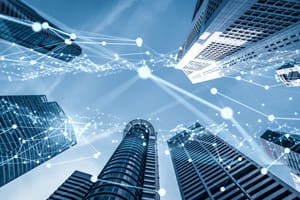Artificial Intelligence Turns Construction into Smart Buildings
AI is being deployed to better understand a building’s energy efficiency, as well as how society interacts with the structure, an example of the intersection of technology and society working together for a common good.
Note: The views expressed here are solely those of the author and/or interview subject and do not represent positions of IEEE.

Roberto Saracco is a Senior member of IEEE and has been active in IEEE’s Future Directions program, among many other volunteer activities. He has spent his career at the intersection of technology evolution, economics, and society. Saracco is passionate about ensuring that engineers understand not just the technology they deploy but also the social implications of their work. “It’s not enough to provide the latest and greatest technology if society is not ready to adopt it,” he says. Saracco shares his insights through the IEEE Future Directions daily blog.
There are hundreds of millions of buildings of every shape and size around the world. Not surprisingly, the impact of these buildings on the global environment is rather large. According to the nonprofit group Architecture 2030, the built environment sector represents 40% of global greenhouse gas emissions1. Transitioning the construction industry to more sustainable methods will be critical to meet the Paris Agreement climate change targets of net-zero by 2050.
The built environment sector includes maintenance of existing buildings as well as construction of new ones. Achieving the 2050 targets will require decarbonizing existing buildings while using new carbon-neutral techniques in new construction.
The construction industry refers to the “building envelope,” which is the interface between the interior, or livable space, and the external environment. A highly efficient building envelope will, among other things, regulate the flow of hot and cool air using such methods as heat pumps. In the past, buildings were not built with the concept of a building envelope in mind. Today, it’s critical, often even mandated by governments, that new construction maximize the efficiency of the building envelope by using new materials2 along with the deployment of technologies, such as AI and IoT3.
Existing buildings can undergo a decarbonization plan, which involves a few steps. First, maximizing the energy efficiency of the structure, generally by improving wall insulation. Next, replacing HVAC equipment with electric-based technology and utilizing renewable energy sources and/or installing solar panels. Finally, managing or minimizing energy consumption through such actions as dynamic lighting and temperature control. The state of California is an example of how local authorities are working with the built environment industry to transition to more sustainable maintenance methods and techniques4.
In the case of new construction, innovative technologies and materials sciences are being deployed to ensure structures are adaptable to meet climate-change requirements. For example, a promising technology involves sequestering CO2 in the production of concrete, which not only removes the CO2 from the atmosphere but also results in a product with greater tensile strength, meaning less can be used in building construction [ 5 ] [ 6 ].
In both cases, the use of AI and sensors are being deployed to better understand a building’s current and future energy efficiency, along with how society interacts with the structure. Saracco discusses how a city such as Toronto can achieve a better understanding of its environment through a concept called the “digital twin7.” Using data collected (via approved privacy protocols) from thousands of interconnected devices, including those embedded in Toronto’s infrastructure for waste, water, and transportation, the digital twin allows for monitoring the entire system for greater efficiency. The digital twin program is also useful for addressing the effects of climate change by simulating scenarios including weather conditions and earthquakes that could put the city at risk.
An active IEEE member and volunteer, Saracco knows and appreciates the value of IEEE as his professional home. These technologies and approaches give Saracco great hope for the future. As he says, “When I was starting out, engineering was all about building with cogs. Engineers of today and tomorrow have a whole new set of opportunities and utilize a systems approach. They must look at the big picture because making a simple change here could have a huge impact over there. And the future is going to be made by those people who can pull this thread together.”
[1] Architecture 2030 (2018). Why The Building Sector? – Architecture 2030. [online] Architecture 2030. Available at: https://architecture2030.org/why-the-building-sector/
[2] Mocerino, C. (2019). Intelligence of LED towards innovative nanotechnologies in the efficiency of building envelopes. [online] IEEE Xplore®. doi:https://doi.org/10.1109/CEAP.2019.8883477
[3] Wikipedia Contributors (2019). Internet of things. [online] Wikipedia. Available at: https://en.wikipedia.org/wiki/Internet_of_Things
[4] Commission, C.E. (n.d.). Building Decarbonization Assessment. [online] California Energy Commission. Available at: https://www.energy.ca.gov/data-reports/reports/building-decarbonization-assessment
[5] Roberts, D. (n.d.). Taking carbon out of the air and putting it into concrete. [online] www.volts.wtf. Available at: https://www.volts.wtf/p/taking-carbon-out-of-the-air-and#details
[6] Emerging Tech Brew. (n.d.). This startup wants to decarbonize concrete production by using CO2 as an input. [online] Available at: https://www.emergingtechbrew.com/stories/2022/06/22/this-startup-wants-to-decarbonize-concrete-production-by-using-co2-as-an-input
[7] Saracco, R. (n.d.). Toronto has got its Digital Twin. [online] IEEE Future Directions. Available at: https://cmte.ieee.org/futuredirections/2023/03/06/toronto-has-got-its-digital-twin/


